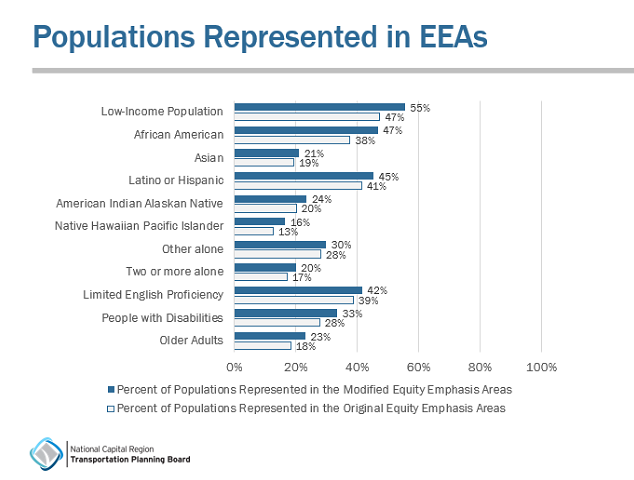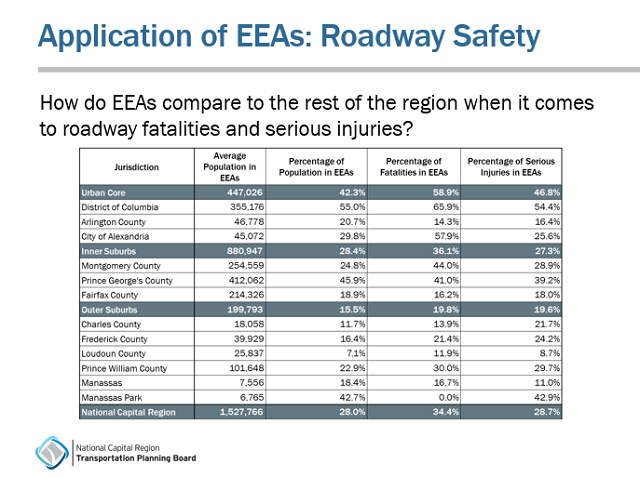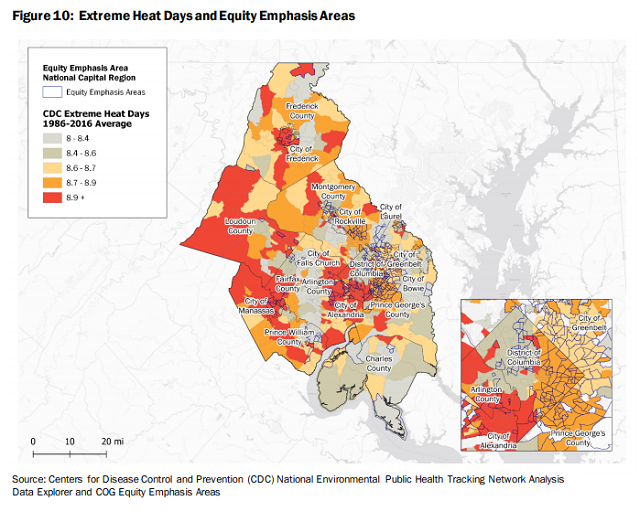Officials on the Metropolitan Washington Council of Governments (COG) and National Capital Region Transportation Planning Board (TPB) are considering how to best weave equity into planning for the next decade, including the region’s recovery from the pandemic. One way the region could begin to prioritize and invest in communities who have been traditionally underserved would be to utilize Equity Emphasis Areas (EEAs) as a planning tool.
EEAs make up just 10 percent of the region’s land area but are home to 30 percent of the region’s 5.4 million people. These are 350 of the region’s 1,222 total census tracts identified by the TPB as having high concentrations of low-income individuals and communities of color. They also have a higher share of households who rent, individuals with disabilities, and workers without a telecommuting option.

EEAs were identified by the TPB and used as a tool for analyzing any adverse impacts of its long-range transportation plan, Visualize 2045. It was determined that the projects included in the 2018 plan would not have disproportionate and adverse impacts on low-income and minority populations. The TPB is also using EEAs as selection criteria in all its grant programs that fund planning for access to transit stations, improving roadway safety, alternative modes of travel, and connecting land-use and the transportation system.

EEAs are being applied more broadly to other areas of planning.
As a recent ITE Journal article reports, TPB member jurisdictions are using them "as a consideration in transit planning, when analyzing the impacts of COVID-19 and planning for recovery, as well as locating mobile health food programs." This is critical given that the TPB’s Voices of the Region Survey conducted at the height of the pandemic found that 43 percent of residents needed to travel outside of their home to work. Low-income respondents were significantly more likely to fall into this group, and were more likely to drive, carpool or vanpool, or use Metrorail to get there.
The Metropolitan Washington 2030 Climate and Energy Action Plan identified a couple of priority equity-focused actions the region must take in pursuit of its climate goals. Specifically, prioritizing sustainable energy access for all residents. The plan analyzed the energy burden for different areas of the region and determined that those living in EEAs spend a higher percentage of their income on energy costs.

A 2018 COG and Virginia Commonwealth University study, Uneven Opportunities, examined the social determinants of health in the region, including the impact of race and ethnicity. The study found that life expectancy varies by as much as 28 years across the region. The findings of this study can be examined through the lens of equity by focusing on the 350 EEAs.
Also, local governments from across the region have started work on a Regional Housing Equity Plan, to assess the current landscape of fair housing in the region and determine actions for increasing housing choice and opportunity for all residents. This assessment could be further focused on EEAs. These are just a couple of examples of past or ongoing work that could perhaps benefit from using EEAs to pinpoint further strategies and actions to advance equity.
COG and the TPB are working with their members to determine how this geography-based equity analysis tool can be used along with High-Capacity Transit Station Areas (HCTs) as key concepts to inform future planning and decision making and shape more inclusive, sustainable, and connected transit-oriented communities.
EEAs and HCTs and their applicability to regional and local level planning were explored further by COG Board members at their 2021 retreat. In October, the board will consider endorsing these concepts as part of a unified planning framework for the next decade.